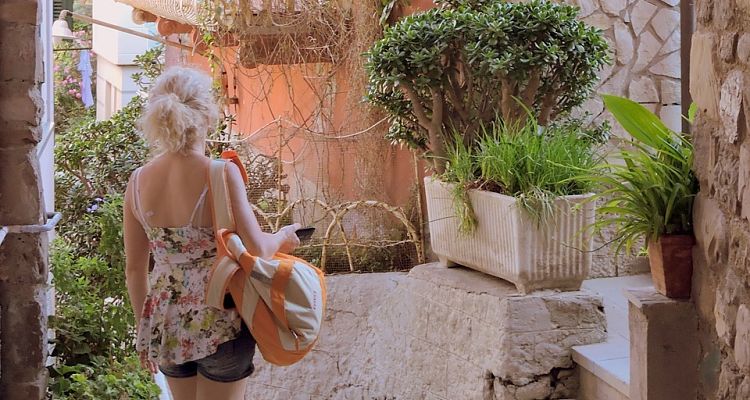
Moving? One vital companion that you’re overlooking is the plants. For the majority of them—even the hardiest varieties—temperature and light changes are unpleasant in addition to the jostling. Because of this, a lot of houseplants wind up on the curb or in the sale section of local classifieds.
Houseplants can really add depth and a level of comfort to any home. Even plants that adorn your front lawn serve as the perfect welcome mat for those who drop by. Unfortunately, when it comes to moving to another home, the plants are the first things to go as they find new homes with their neighbors and friends. It is important to carefully move plants to a new location to ensure that they remain healthy and vibrant.
Those who leave plants behind do so because of how fragile and not to mention how stressful they are to relocate. No one wants to move a plant that looks healthy one minute and then wilted and yellows the next as soon as the plants get to the other location. Not to mention, replanting can also be a difficult chore especially when you have other items in your home to relocate.
Moving Plants to a New Home: What You Need to Know
It might be difficult to move plants to a new property, but with the right information and planning, you can ensure a smooth transfer. There are many important factors to take into account, from knowing the kind of environment your new house offers to careful planning and preparation on the day of the move. This blog post will go through the crucial information and techniques required to successfully relocate your cherished plants.
The Risk of Moving House Plants
Even your largest plants can frequently be transported with you when you move. (You put a lot of effort into keeping them alive this long.) It is advised that you begin by preparing your plants about a week before the major relocation. This entails cutting off any dead leaves, getting rid of any weeds or bugs from the soil and stems, and, for your protection, repotting the plants in a plastic container that won’t break while being transported.
This applies to any journeys you will take with your plant. Those who are exported, a practical but risky alternative, will require additional special attention.
Creating a green and welcoming environment inside our home with houseplants is a nurturing experience that helps us and the plants grow. When it comes time to move, it is no surprise many people want to go through the hassle of taking the plants with them. Moving houseplants can be a bit tricky for various reasons. By following these guidelines for moving houseplants, you’ll easily be able to get through the process.
Can I Take My Plants When I Move?
Yes, you are allowed to move with your plants. However, it’s crucial to take into account the circumstances of the plants’ transportation and whether they will be able to make the trip safely. If particular plants can’t handle the stress of being transported, it could be wise to leave them behind. Our section on moving plants safely offers invaluable tips on how to protect your plants from stress and damage during the move
Thankfully, there are ways in which you can safely move your plants to the new location and have them looking as the first day you bought them home. For those who are moving outdoor plants to another state, you would first have to gain approval from the Department of Agriculture. The reason for this is that plants do not only carry diseases but they also make great homes for bugs as well.
And since it can easily infect other plants when replanting in new soil, the Department of Agriculture would first need to check your plants to make sure that they are safe for moving. Crossing state lines with your plants requires you to be aware of various regulations, as each state has its own set of rules for plant transportation. The USDA mandates that certain plants must be quarantined for up to 30 days when crossing state lines. Failure to comply with USDA regulations can result in fines of up to $10,000.
Timing is Crucial
When it comes to transporting plants, timing is everything. It is important to understand their dormant time. Many plants benefit from translocation in the late fall or winter. Plants are inherently less active during this time and more resistant to the stresses of movement.
Deciduous trees and bushes, for example, are often best moved after they have dropped their leaves and gone dormant. During the changeover, this permits them to preserve energy and concentrate on root development.
Perennial flowers and grasses can also be transplanted while dormant, causing minimal disturbance to their growth cycles. This time technique also decreases the possibility of transplant shock and encourages quicker establishment in the new place. According to a study by the American Horticultural Society, the survival rate of plants moved during their dormant season is 90%. However, about 20% of plants do not survive long-distance moves.
Is Moving Stressful For Plants?
Moving can be stressful for plants since the plants may find it difficult to adjust to changes in light, temperature, humidity, and water levels. Plants produce stress hormones like jasmonic acid when disturbed, affecting their growth.
Additionally, transporting the plants themselves, whether by jarring them in a car or packing them in boxes, can destroy their roots and leaves. For delicate plants with fragile leaves, consider wrapping them in bubble wrap to prevent any damage during the move.
To lessen the strain on plants during transportation, it is advised to move plants during the cooler months. It’s wise to keep the plants in their original containers and to wrap them in plastic or other barrier-free materials to prevent the soil and roots from drying out. The plants should also be kept in a shaded place during transit and watered occasionally.

Make Moving Day Easier with These Plant Packing Tips
You can make moving day much simpler and less stressful by following a few simple plant packing tips. Selecting the appropriate containers for your plants is an important first step. Before you start packing, make sure to go through our plant moving checklist to ensure you’ve got all the essentials for a successful move.
Because they are lightweight and robust when traveling, plastic containers are a fantastic choice. Add some packing peanuts or shredded paper to the container’s bottom to provide some cushioning for the plant.
After that, the plant needs to be placed inside a plastic bag to stop soil from spilling out while being transported.
Do not overwater them, as this could cause an excess of moisture that would harm the plant. Consider purchasing a plant hydration device to maintain the plants’ moisture levels while you are moving, particularly if you are doing so in the sweltering summer. Plants should be transported in a cool, shaded area of the moving truck to prevent them from being too hot or cold.
Why You Shouldn’t Move Certain Plants to Another State
It is not advisable to transport certain plants to another state since they may be invasive species, which can spread quickly and outcompete native plants for resources.
Invasive species can cause serious harm to natural ecosystems, and controlling them can be expensive.
Additionally, some plants may be home to diseases or pests that are harmful to agriculture and local wildlife. Aphids and spider mites account for 60% of plant pests during moves.
Moving plants from one state to another can unintentionally bring these pests or illnesses to a new location, which could seriously harm local agriculture.
Additionally, it’s possible that the plants won’t be able to flourish in the new environment and won’t be able to adapt. This can make the plants impossible to survive and ultimately die, wasting time and resources.
Check with State Laws
Checking with state law is especially important if you are moving across state lines or to a different county. Some states and countries will not let you move certain types of plants due to environmental concerns. These laws may seem arbitrary, but governments spend a good deal of time and money trying to eliminate foreign flora from taking over local growth. If you need to leave some plants behind due to state laws, consider giving them to friends, family, co-workers or charity.
Moving a Small Plant VS Large Outdoor Plant
There are some parallels between moving little plants and moving huge plants, but there are also some significant distinctions to take into account.
Small plants can be moved in a box or container and kept in a cooler environment throughout the journey. One person can easily handle them and won’t take up as much room as a big plant.
While being transported, large plants might need a bigger vehicle or specialized equipment, as well as must be secured or fastened down to keep them from moving around or toppling over. They could be more difficult to transport and will take up more room in the car.
Take some cuttings if you want to move some of your outdoor plants but don’t want to destroy the new owner’s landscape. Get some flower tubes, put water inside of them, and cap them. By doing this, you should be able to get your cuttings to your new house and garden in good condition.
Special Treatment for Sensitive Plants
Plants that are sensitive, such as orchids or succulents, require extra care throughout the relocation. Because of their delicate roots, orchids necessitate meticulous research into their specific requirements, such as preferred potting mix and appropriate humidity levels. It is critical to secure them properly in order to maintain their delicate stems and flowers. Succulents that are accustomed to arid environments should avoid overwatering and excess moisture buildup, which can cause rot.
They may also require shade to protect them from direct sunshine while traveling. Understanding and addressing these plants’ specific requirements support their well-being and successful adaptation to their new environment. Consultation with plant care resources and experienced growers might provide useful suggestions for a smooth transition.
Pack Systematically
Plants will be one of the last items that you pack because the plants are just so delicate by nature. To pack a plant, you should wrap it in plastic or tissue paper. If it is a large plant, you can put a trash bag over it and then seal the bottom. If you opt to use plastic, poke some holes in the surface so that you don’t suffocate the plant. Smaller plants can go in boxes, but for larger plants, you may have to just carry them individually. When you place the plants somewhere in your car or the moving truck, put them somewhere they won’t be smashed.
Moving into an Apartment vs a House
Moving into an apartment as opposed to a house has some unique considerations. The types of plants you can bring with you while moving into an apartment may be limited by the amount of room availability or the lack of an outdoor place. It can be difficult to move plants through narrow spaces like hallways or up flights of stairs. On the other hand, if you move into a house, you might have more outdoor space to work with and be able to plant more types of plants.
Small Plants
Small plants should not be tipped over or have their ceramic pots broken when being moved. Consider just wrapping the container and leaving the plant alone. Lack of time to wrap? Put the pots close together in a nest. Put your plants in a box with the lid open so you can always see where they are. Since they are the most delicate items, pack them last and stack them on top of other boxes.
Better, put them in the driver’s seat and, depending on the time of year, provide your plants with either warming heat or cooling air conditioning. Make sure to bundle your small plants carefully in a box lined with newspaper if you decide to have them delivered to your new address.
Large and Outdoor Plants
You should follow the same procedures you would when transferring tiny plants when transporting large plants. To prevent spills during transport, try taping cardboard over the soil. To provide an extra layer of protection for your plants, wrap the pots in packing paper before placing them in moving boxes. Taller plants may become somewhat slanted or uprooted, so you’ll need to replant them once they’ve settled into their new location. To protect your pots from dents, wrap them in a newspaper.
When moving houseplants, on the other hand, the physical aspect of relocating is much easier as you can basically load it into your car and drive to your new location. When you move houseplants, it’s essential to keep them in a stable environment to minimize stress and shock. What is recommended though is that you sterilize the potting soil. To sterilize the potting soil, you would first have to mix at least five cups of soil with one cup of water in a roasting bag.
Without tying the bag’s top, place it on a baking sheet at low temperature. Insert a meat thermometer in the bag and get the soil to get to 170 degrees before you turn down the heat some more. The temperature should not exceed 180 degrees Fahrenheit.
Prune With Care
Plants can be made more manageable by trimming them before moving, but excessive pruning should be avoided to avoid stress and harm. Consider the pruning needs of various plants, such as deciduous trees versus floral plants. Pruning should be done a few weeks before the transplantation to allow plants to recover. To promote healthy development and successful relocation, use clean and sharp pruning tools and suitable practices.
You Can’t Move All Your Plants
The truth is that you probably won’t be able to maintain all of your indoor plants alive. You might not be able to bring every houseplant with you if your new home has Department of Agriculture requirements or if you have limited room.
Do not worry; plants make wonderful farewell presents for friends and family. Why not leave them with a flourishing plant to make their house more cheerful? You can also give to hospitals, community gardens, senior homes, and other places where they will continue to exist as a result of your generosity.
Consider Temperature Control
If the temperature is going to vary widely, it is a good idea to try to keep the plants in a temperature-controlled environment. If at all possible, keeping the plants in the passenger area of a vehicle is a perfect spot, because you can keep the plants at the same temperature that you are in normal conditions at home. If you will be staying anywhere overnight, move the plants inside to the hotel room with you so that the cold or hot doesn’t kill them overnight.
Mailing Your Plants
Consider shipping your plants. You must once more research the limitations of bringing live plants into another state. Succulents are stronger plants, thus shipping is a better option because there is a greater potential for damage. Try to determine who will transport your plants swiftly and safely when selecting a shipping firm. To analyze your options, drop by your neighborhood post office or use an online shipping calculator.
Will Moving Companies Pack and Move House Plants?
Most movers will pack and move house plants as long as they are properly prepared and packed for transport, but it’s best to confirm with your specific moving company. It is important to remember that some moving companies might have restrictions or guidelines on the kinds of plants that can be relocated, particularly if they are deemed dangerous or illegal.
It is best to confirm with your moving company beforehand to avoid any surprises on a moving day because some movers may charge extra fees for moving plants. On average, specialized plant moving services can cost between $100 to $500 depending on the number and size of plants. Moves conducted in spring have a 15% higher plant survival rate.
What You Didn’t Know About Moving Plants
You’ve got your moving checklist, but have you factored in the hidden costs of relocating your leafy friends? Sure, you might be thinking about the logistics, but what about the specialized containers or the soil sterilization process? Let’s dive in. The pH level of the soil in the new location can significantly affect plant health. Specialized containers, like climate-controlled boxes, can set you back anywhere from $20 to $50 each. These containers maintain a stable environment for your plants, reducing the risk of transplant shock.
Hold on, the story doesn’t end there. Soil sterilization is far from mere jargon—it’s an essential practice. If you’d rather skip the DIY route, expect to shell out between $50 and $100 for professional soil sterilization, depending on how much soil you have. So why is this so important? Sterilized soil significantly reduces the chances of spreading soil-related diseases and pests—something that the Department of Agriculture doesn’t take lightly. Neglecting to adhere to these standards could lead to substantial penalties, with fines varying from $200 up to $1,000 based on state laws.
Moving Plants Internationally
It’s important to comply with any rules or legislation that may be in effect while transporting plants over foreign boundaries. The import and export of plants and plant products are governed by Plant Protection Organizations (PPOs) in both the plant’s country of origin and final destination. To confirm that the plants being imported or exported are free from pests or diseases and that they satisfy the requirements of the importing country, they may need a phytosanitary certificate or other paperwork.
During a Move
In warm weather, pull over sometimes and open a window to let some fresh air in. Maintain a cozy temperature in the automobile during colder weather. Keep plants away from strong winds and direct sunlight. Bring them indoors if you stay at hotels along the trip so they won’t be harmed by extreme weather.
After a Move
Make caring for plants a priority when you get to your destination; unwrap and water them right away. Give them a few weeks after the move to recover from the shock of the move. Some of them might wilt or lose their leaves, but keep in mind that this is usually just a temporary defensive reaction that should go away once you get comfortable.
Keep an eye on any garden plants you put in your new house. Their health will be impacted by the different soil, climate, and air quality, as well as the shock of being relocated and replanted. Keep an eye on their development and, if it seems like they are not adjusting well, call in some local assistance.
Recovering From a Move
The shock of moving is not often appreciated by houseplants. To feel more at ease and comfortable in their new surroundings, they will need assistance adjusting. When moving plants, especially ones that require additional care and support, be slow and careful. A study from Cornell University shows that plants exposed to abrupt changes in light conditions can take up to 3 weeks to adapt.
After your relocation, some fading in your houseplants is completely natural. Remove the dead foliage if there is any significant damage. If not, keep giving them the right amount of water and extra light as needed. Your houseplants should quickly acclimate to their new surroundings.
If you are not up to experimenting with sterilizing your soil, you can always take your plants to a nursery where they would be checked out for insects and of course, get the soil sterile. Moving experts also recommend that you transport your plants in plastic containers rather than ceramic pots, so they can fit comfortably in moving boxes.
Challenges in Moving Plants and How to Overcome Them
The Challenge of Microclimate Mismatch
When you move, you might not consider that your plants are accustomed to the microclimate of your old home. This includes factors like humidity levels, air circulation, and even the quality of natural light. A sudden change can shock the plants, leading to poor health or even death.
Solution: Before moving, research the microclimate conditions of your new home. Use humidity monitors and light meters to gather data. Gradually acclimate your plants to the new conditions by adjusting your current environment to match the new one, if possible.
The Dilemma of Water Quality
Water quality can vary by location and have a direct impact on your plants. For example, regions with hard water rich in minerals can disrupt your plants’ nutrient balance.
Solution: To avoid this, assess the water’s pH and mineral levels in your new location. If the results aren’t favorable for your plants, think about setting up a water filtration system or opting for distilled water to keep your plants thriving.
The Issue of Local Pests and Diseases
Your new location might expose your plants to local pests and diseases that they have never encountered before, making them more susceptible.
Solution: Consult local nurseries or agricultural extensions to understand common plant diseases and pests in your new area. Treat your plants with preventive organic pesticides and fungicides before the move.
Check all of your plants closely for any pests before you move. What may be a normal pest where you live now, maybe a foreign species where you are moving next. Take time to closely check the dirt, leaves and stem of the plant to make sure there aren’t any hidden bugs. Then find someone who doesn’t mind touching bugs to get rid of the bug for you.
Myths and Misconceptions About Moving With Plants
All Plants Can Handle the Move If Properly Packed
- Contrary to popular belief, some plants are too sensitive to handle the stress of moving, regardless of how well they are packed. According to a study by the American Horticultural Society, certain species have a significantly lower survival rate when moved.
USDA Approval Is Only for Exotic or Foreign Plants
- Many people think that USDA approval is only necessary for exotic or foreign plants. However, even local plants may require USDA approval, especially when crossing state lines, to ensure they are not carrying diseases or pests.
Watering Plants Heavily Before the Move Is Beneficial
- It’s a common misconception that giving plants a good soak before the move will help them. Excessive watering can lead to root rot and make the plant more susceptible to diseases.
Moving Companies Are Equally Skilled in Plant Transportation
- Not all moving companies have the expertise to handle plant relocation. Specialized plant moving services are often better equipped and knowledgeable about the nuances of plant transportation.
Climate-Controlled Containers Are an Unnecessary Expense
- Many people skip climate-controlled containers to save money, thinking regular boxes will suffice. However, a study by the National Gardening Association found that using specialized containers can significantly reduce the risk of transplant shock.
In conclusion, it takes careful planning and preparation to relocate plants to a new location so that they remain safe and healthy. Your plants can flourish in their new surroundings and keep enhancing the beauty and liveliness of your house if you give them the right care and attention. You can enjoy your new home with healthy, happy plants by following the suggestions and guidance provided in this article to make your plant moving experience successful.
Storage Units Near You
Find Storage In Your State





Leave a Comment